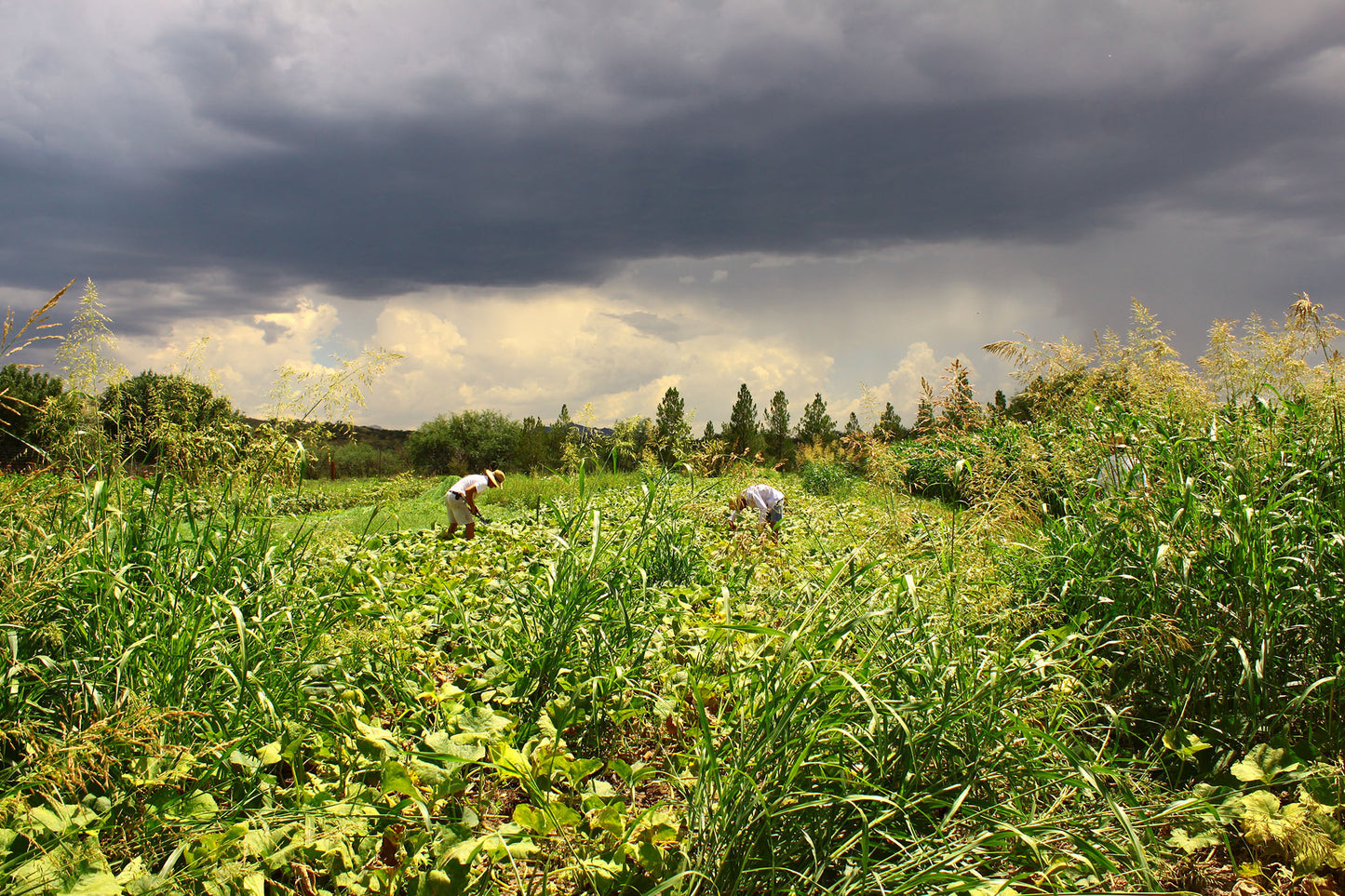
by Sheryl Joy, Collections Curator
In the Greater Southwest, El Dia de San Juan (June 24) has long been celebrated as the time of the coming of the summer rains. A time to celebrate the end of the dry-heat, to rejoice in the crack of lightning, the crash of thunder and the rush of rain that mean it is time to plant. A time to remember that even if the rain clouds are not yet building in the south, they soon will come to quench the land ... and shortly after the corn, squash and bean plants will sprout and make food for the people.
The monsoon rains were never very predictable ... the practice of watching the clouds and waiting, praying and hoping for the rain goes back as far as there were people living in this region. Before Catholics brought El Dia de San Juan there were (and still are!) many indigenous ceremonies to bring the rain.
But recently the monsoon season is changing even more, thanks to climate change. Perhaps the clearest thing that can be said is that the monsoons are becoming more unpredictable. I've talked to folks who've lived in Tucson for many decades who say it used to be that once they started, the rains were much more regular ... there'd be rain in the area just about every day. Now we can go for weeks between storms. Studies by the USDA Agricultural Research Service (2019) and by the UA (2017) have shown that monsoon storms have become less frequent but more intense ... the same amount of rain may fall, but in a shorter period of time with more extreme wind. Temperatures have increased in the region by almost half a degree per decade since the 1970's. Higher temps dry out vegetation faster (leaving it prone to ignition by lightning and wildfires) and dry soil faster (making it harder for the more intense rainfall to soak in). The timing of the rainfall is changing too. Climate change is creating more intense hurricanes: in the last 20 years there were seven Category 4 hurricanes whose impacts were felt in this region. There were only three of that magnitude in the 30 years previous. Peak hurricane season is September and October, so it looks as though late season rains are becoming more likely for us. One might think that rain at any time would be welcomed in the desert, but for traditional desert agriculture these late rains aren't necessarily helpful. Corn planted during the July rains should be drying down for seed harvest in September and October, and drenching rains at this stage can ruin a crop. Tepary beans have been grown for centuries in this region, flourishing on early season rains and drying for harvest in the fall. A heavy late September or early-October rain could destroy this crop also.
Those of us who farm and garden in the southwest are struggling to make sense of these changes, to figure out how we can adapt, as farmers have always done. Is heavier mulching enough to hold moisture in our soil through our hotter days and nights? Can we arrange deeper and smarter berms and swales or floodwater fields for water collection, to capture the rainfall from these more intense storms? Or do we need bigger water harvesting systems to capture that flow? ... will downspouts and gutters be able to handle it? Can we add more organic matter to our soils more often, to balance higher heat that drives soil biota to consume it? Can we shift planting times to create less risk for our crops? Can we work to save and select our seed stock to make it even more resilient to cope with these changes?
There are far more questions than answers at this point, but the questions are a start. If we ask and experiment and share the knowledge we gain, perhaps adaptation will be possible. And continuing the tradition of waiting, hoping, and praying for rain can't hurt!
